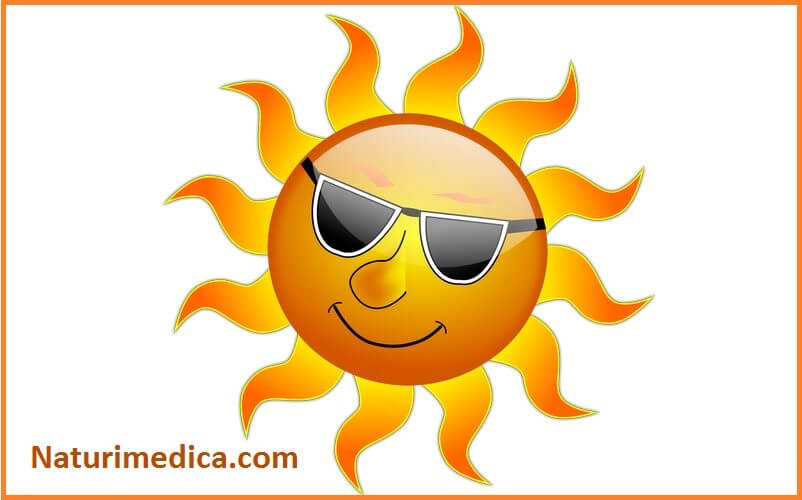Do you know your current vitamin D level?
If you don’t, be sure you check this promptly by doing a simple blood test via your GP or by completing my vitamin D level self-assessment questionnaire to start with. It could be the key to solving many of your health problems and even save your life.
Mounting scientific evidence confirms that vitamin D is one of the most potent health-boosting substances and is vital for health.
Alas our fear of the sun has resulted in an epidemic of vitamin D deficiency that is widespread even in sunny Australia. This applies to all age groups but especially to people who spend most of their time indoors – office workers, elderly, people in hospitals, chronically ill, people overusing sunscreen etc.
I test every client for vitamin D levels in my clinic and find that around 95% are deficient, and many have low levels. Not surprisingly, their low status usually correlates with the symptoms they have.
Although quite common, this deficiency can be relatively easily solved by increasing safe sun exposure and/or appropriate supplementation.
What vitamin D levels should you aim for?
Current research suggest that to benefit from the healing properties of vitamin D, our blood levels should be at least in the range of 100–150 nmol/L (40 ng/ml-60 ng/ml). This level is much higher than the standard lab recommendations of more than 50 nmol/L deemed as sufficient.
Sensible and regular sun exposure is the best and safest way; however, because of our indoor lifestyles (this particularly applies to office workers and elderly) we most likely need to supplement.
Supplemental doses can be significantly higher than the standard dose of 400-1000 IU per day, depending of course on your current blood levels.
Therefore testing is crucial and will provide necessary guidance to how much vitamin D is needed to supplement (in some cases 3,000-5,000 IU per day or more are needed for a period of time).
Chronic vitamin D deficiency/ low vitamin d levels takes time to be corrected, and it could take 3-6 months to raise the levels beyond 100 nmol/L.
Importantly, because vitamin D is a fat soluble vitamin, it can accumulate to toxic levels in the body over time. This applies to supplements only as vitamin D from sunlight cannot be overdosed thanks to the body’s ‘safety mechanisms’.
Therefore, it’s so important to re-check the status every 3-4 months to ensure that the levels are improving and there is no danger of reaching toxic status.
Excessive levels can have serious health consequences and are associated with bone loss, heart disease and soft tissue calcification. Don’t self-dose with large doses but work with a knowledgeable practitioner to safely increase and monitor your levels!
Why having optimal levels of vitamin D is so important?
Vitamin D is one of the most researched substances and there is sufficient evidence to conclude that vitamin D is essential for survival. Latest research indicates that it regulates over 900 gene signals in the body controlling many different tissues and cells. So far the research confirmed the following health benefits:
- Essential for immune system disorders, including cancers, infections, colds and flu
- Boosts mood, decreases depression and enhances cognitive performance
- Prevents colon, prostate, breast, ovarian, and many other cancers
- Prevents and treats bone diseases such as osteoporosis. Good levels of vitamin D are essential to absorb calcium, otherwise the body can’t absorb it and supplementation is next to useless and can actually be detrimental
- Prevents diabetes, helps with insulin secretion
- Vital for weight loss and obesity – studies show that vitamin D levels directly predicted the likelihood of weight loss and success of any weight loss programs. As vitamin D levels drop waistlines and weight increase
- Higher levels of vitamin D are associated with higher levels of HDL cholesterol (often called good cholesterol)
- Low levels of Vitamin D are associated with fibromyalgia and autoimmune diseases like multiple sclerosis and rheumatoid arthritis
- Good levels prevent falls which are a major risk for fractures in elderly. According to Michael Holick, an expert on vitamin D and the Director of the Vitamin D, Skin and Bone Research Laboratory at Boston University Medical Centre, about 30-40% of the people who get hip fractures are vitamin D deficient. He also pointed out that regardless of the amount of calcium consumed, low vitamin D accelerates bone loss and increases the risk of fractures
Where do we get vitamin D from?

Vitamin D is primarily synthesised from UVB radiation (sunlight) by the skin where a precursor, provitamin D, is formed from cholesterol and then absorbed through the skin. It needs to be ‘activated’ in the body, first in the liver and then kidneys before it can be utilised.
The activation process takes around 36 hours. Having liver damage/impaired function or kidney disease can greatly decrease activation of vitamin D. A few important facts about getting your vitamin D from sunlight:
- While we all benefit from regular sun exposure, it is important to make sure that we manage our exposure to avoid getting burnt. A few shorter periods of sun exposure are better than one longer one. Most people know that sunburn has been related to an increased risk of skin cancer. However, studies show that if we avoid getting sunburned yet have regular sun exposure, we will actually have a decreased risk of skin cancer (melanoma).
- To prevent deficiency, most experts recommended exposing face, hands and arms (as a minimum) three or more times a week for about half the time it would take to get sunburned, or between 6 and 20 minutes, depending on the person’s skin colour/tone, the season, and the distance from the Equator. Current recommendations for Australians are as follows:
- In summer – for adults with white/sensitive skin it is recommended to get outside for 6-10 minutes at least 3-4 times per week most days mid-morning and/or mid-afternoon. People with darker skins should generally double the time.
- In winter – sun exposure is required 4-5 day per week at midday for about 20 minutes in Sydney and 30-40 minutes in Tasmania. Brisk walk with exposed arms will be particularly beneficial.
- This exposure to the sun needs to be without sunscreen. Even weak sunscreens such as SFP8 block the body’s ability to generate vitamin D by 95% and thus create the deficiency. Any SPF higher than that virtually guarantees we get none.
- Ultraviolet exposure beyond the minimal dose required to produce light skin redness does not increase vitamin D production any further. An equilibrium occurs in white skin within around 20 minutes of ultraviolet exposure, at which point further increases in this vitamin is not possible because the ultraviolet light will actually start to degrade it. It can take 3-6 times longer for darker pigmented skin to reach the equilibrium concentration of skin provitamin D. However, skin pigmentation does not affect the amount of vitamin D that can be obtained through sunshine exposure.
- After sun exposure, especially after exercising in the sun and sweating, it is beneficial not to shower immediately as vitamin D produced on the skin can be easily washed off. Take time to cool down after you work out and let your body absorb the vitamin D produced in the skin.
Vitamin D from foods also comes in an inactive form and goes through the above mentioned activation process in the body. It’s absorbed from the intestines, importantly, only in the presence of dietary fats. Therefore always take vitamin D supplements with meals containing good fats such as olive oil, organic butter, avocados or coconut oil.
Low fat diets are not only hard to stick to long-term but also are damaging to the bones by impairing absorption, in addition these diets contribute to the many illnesses mentioned above.
How to get your vitamin D levels high and maintain them?
- Get enough sun – as mentioned, by far the best and safest way to increase vitamin D levels is through sensible sun exposure.We do take it totally for granted, but natural light is as much a nutrient as food and water. Given enough sunshine, most people don’t need it from foods or supplements. With regular exposure, it is possible to accumulate vitamin D in the tissues (mostly in the liver and fat cells) during summer which will be stored and then used up during winter. However, being outside for required time may not be possible for many and taking a multivitamin won’t give you enough vitamin D, either. So I recommend supplementing for a required period of time to elevate your levels beyond 100 nmol/L.
- Take cod liver oil – besides sunlight, the best natural source of vitamin D is cod liver oil. An average teaspoon contains 1,400 IU of vitamin D. It’s important to use only high quality cod liver oil that has been purified of harmful environmental toxins such as heavy metals, dioxins and PCBs. In addition, some cod liver supplements may contain high amounts of vitamin A which needs to be closely monitored as it also can accumulate in the body to toxic levels.
- Supplement with vitamin D3 (cholecalciferol) – in doses determined by the blood test results, as discussed above.
- Eat foods containing vitamin D – very few foods contain vitamin D in sufficient amounts. Best sources are oily small fish like herring, sardines, mackerels and anchovies. Limit the larger fish such as salmon and tuna that are higher up on the food chain, as the mercury content may be too high to safely eat. There are vitamin D precursors in some plant foods and leafy greens known as ergosterols. Parsley is a particularly rich source so add it to juices and salads. So are mushrooms, especially shiitake and maiitake, have them in soups and casseroles.
- Magnesium rich foods – check your magnesium levels as this key mineral potentiates vitamin D activities in the body via possibly increasing its absorption and endogenous activation. Ensuring that at least the recommended RDI for magnesium should be considered as an important aspect of successfully increasing levels.
Summary
There is an increase in global awareness of vitamin D deficiency and its supplementation is becoming common practice to improve health and wellbeing.
Sensible sun exposure is the easiest and most effective strategy to get sufficient vitamin D levels to improve your health. It’s free and widely available! That’s why not many are promoting it, as it can’t be bottled and sold for profit!
Joanna Sochan
Wholistic Health and Lifestyle Therapist
Natural and Lifestyle Therapies for Abundant Health and Wellbeing
Additional resources
- How safe is your milk?
- Vitamin D, DHA and EPA (in fish oils) can reduce pain
- Antioxidants explained – what are antioxidants plus a list of best sources
- Smoothies: How to make healthy and quick smoothies
- Can multivitamins cause anxiety and panic attacks?
Disclaimer: The above material is for informational and/or educational purposes only. It should not be used to self-diagnose and it is not a substitute for a medical advice, diagnosis, treatment, prescription or recommendation. All viewers of this content, especially those taking prescription or over-the-counter medications, should not make any changes in their health regimen or diet before first consulting a doctor or other qualified health provider with any questions they may have regarding a medical condition or their particular circumstances.

Joanna Sochan is a Natural Therapist and founder of Naturimedica Holistic Health & Wellness. She has a passion for helping clients transform their lives by becoming healthy and well naturally. Joanna has 12+ years experience in clinical practice and has special interest in solving complex cases, functional medicine testing, gut health, sleep, fatigue and chronic pain. She guides clients through her tailored programs and eCourses as well as helping them individually (mostly online) Australia-wide. View full bio.
 Print This Post
Print This Post 

Leave A Comment